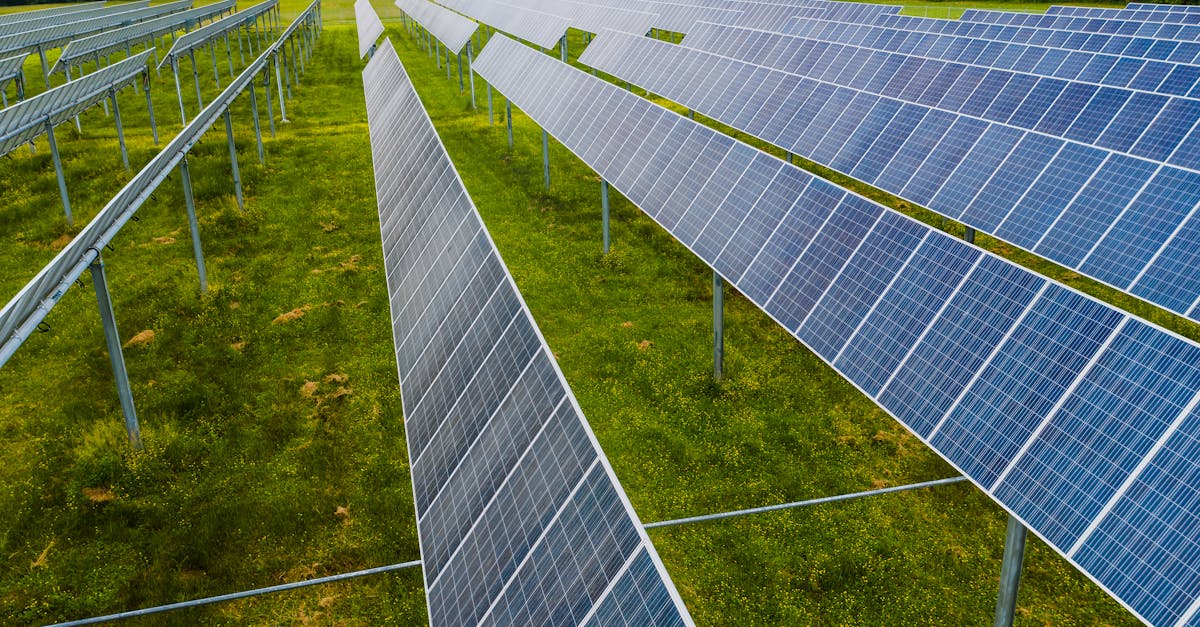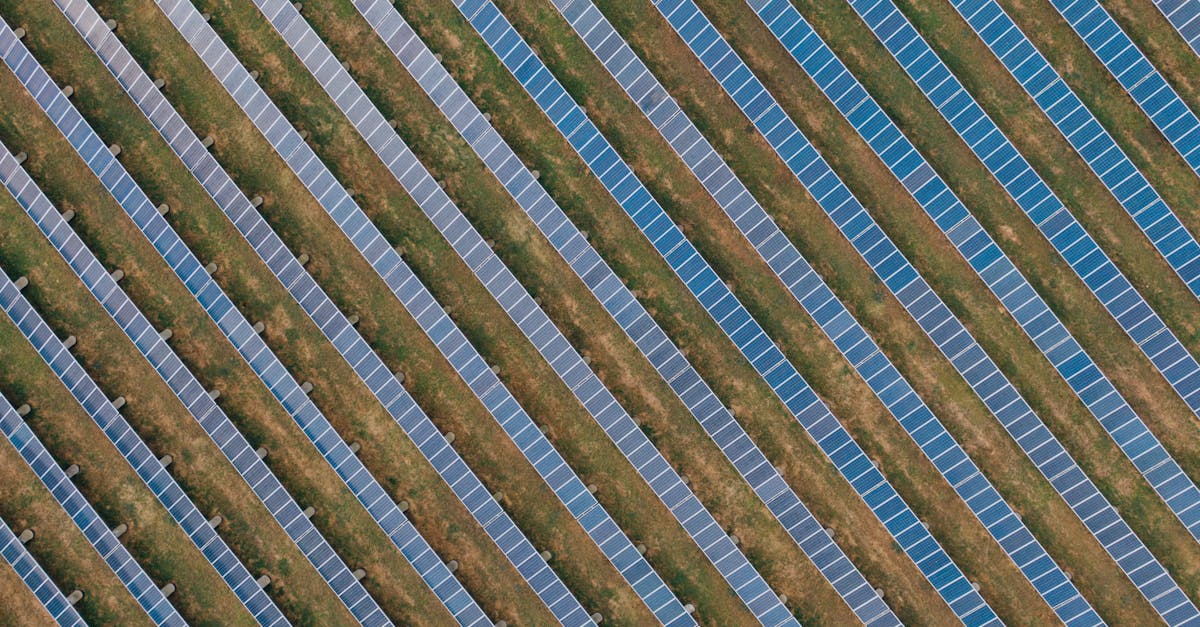
Solar Optimization Software
Solar optimization software plays a critical role in enhancing the performance and efficiency of solar energy systems. This type of software utilises advanced algorithms and data analysis to assess various factors, such as location, weather patterns, and shading effects. By consolidating this information, it assists users in designing and implementing systems that harness maximum solar energy. Additionally, it can monitor real-time performance, enabling swift adjustments and improvements to the solar panel system optimization process.
Many software solutions incorporate features such as predictive analytics and performance forecasting, allowing users to anticipate production levels and identify potential issues before they become significant challenges. The integration of this technology streamlines the management of solar installations and facilitates informed decision-making. As demand for renewable energy sources increases, solar optimization software continues to evolve, ensuring that systems operate at peak efficiency while reducing downtime and maintenance costs.
Features to Look For
When considering solar optimization software, several key features can significantly enhance the efficiency of solar panel system optimisation. A user-friendly interface is essential, allowing operators to easily navigate the software while accessing important data. Real-time monitoring capabilities provide immediate insights into energy production and system performance, ensuring quick detection of any inefficiencies. Additionally, advanced analytical tools can help users track historical data trends, enabling more informed decision-making for future adjustments.
Integration with other energy management systems is another critical feature to look for. This allows for seamless data exchange and contributes to a holistic understanding of energy usage and production. Predictive maintenance alerts can also be valuable, as they help in identifying potential issues before they escalate. Furthermore, features that support customisation enable users to tailor the software to their specific needs, making solar panel system optimisation more effective and personal.
Case Studies in Solar Optimization
Numerous case studies underline the effectiveness of Solar Panel System Optimization across various regions. One notable implementation occurred in a large commercial facility in the UK, where advanced optimisation software was employed to analyse energy production and consumption patterns. The software facilitated real-time adjustments to the system, maximising energy yield even under fluctuating weather conditions. As a result, the facility reported a significant reduction in energy costs, illustrating the potential benefits of adopting such technology.
Another example can be found in a residential community that integrated Solar Panel System Optimization into its energy strategy. By deploying a combination of smart inverters and monitoring tools, homeowners were able to optimise their individual systems while contributing to a collective energy management framework. This collaborative approach led to enhanced energy efficiency and a notable increase in overall energy independence for the community, showcasing how Solar Panel System Optimization can foster both individual and communal benefits.
Successful Implementations
Successful implementations of solar panel system optimization have been observed across various sectors, demonstrating significant improvements in energy efficiency and cost savings. One notable example involves a large commercial facility that employed advanced solar optimisation software to analyse energy production and consumption patterns. By adjusting the angle of their solar panels throughout the day and leveraging real-time data, the facility maximised energy yield, leading to a reduction in energy costs by more than 20%.
Another example is a residential community that adopted solar panel system optimization to enhance the performance of their shared solar array. Through detailed monitoring and analysis, residents were able to identify underperforming panels and take corrective actions, such as cleaning and repositioning. This collaborative effort not only increased overall energy output but also fostered a greater sense of community engagement in sustainability initiatives.
Challenges in Solar Optimization
Solar optimization involves several challenges that can impede the effectiveness of a solar panel system optimisation process. One significant hurdle is the variability in environmental conditions, such as cloud cover, shading from nearby structures, and seasonal changes. These factors can significantly affect solar energy generation, leading to inconsistent performance that makes it difficult to rely solely on traditional optimization methods. Moreover, the integration of various technologies, such as inverters and energy storage systems, may not always seamlessly align, requiring sophisticated coordination to achieve optimal results.
Another challenge in solar panel system optimisation lies in the data management aspect. Accurate data collection and analysis are crucial for effective decision-making. However, many systems still rely on outdated technology or inefficient methodologies, which can lead to poor data quality. This inadequacy complicates the process of identifying improvement opportunities. Furthermore, the rapid evolution of solar technology may outpace the ability of existing systems to adapt, resulting in missed opportunities for efficiency gains. Addressing these issues demands innovation and the development of more robust frameworks to enhance solar energy production.
Overcoming Technological Hurdles
Technological hurdles in solar optimization can impede the effective deployment of solar panel systems. One common issue involves the integration of various software platforms and hardware components. When different systems fail to communicate seamlessly, it often leads to data discrepancies and reduced efficiency in monitoring energy generation and consumption. Prioritising compatibility across these technologies is essential, ensuring that solar panel system optimization can be achieved without excessive manual intervention.
Another challenge arises from the rapid evolution of solar technology. Continuous advancements necessitate regular updates to both software and hardware, which can be resource-intensive for organisations. To mitigate this issue, many companies are investing in modular systems that can be easily upgraded or expanded as new technologies emerge. This approach not only enhances the longevity of solar panel systems but also facilitates ongoing improvements in solar panel system optimization, thereby maximising energy production and overall system performance.
FAQS
What is solar optimization?
Solar optimization refers to the process of enhancing the efficiency and effectiveness of solar energy systems, including the design, installation, and operation of solar panels to maximise energy output and reduce costs.
How does solar optimization software work?
Solar optimization software employs advanced algorithms and data analysis to assess various factors such as site conditions, weather patterns, and energy consumption, allowing for improved planning and management of solar energy systems.
What are some key features to look for in solar optimization software?
Key features to look for include predictive analytics, real-time monitoring, performance benchmarking, user-friendly interfaces, and integration capabilities with other energy management systems.
Can you provide examples of successful implementations of solar optimization?
Successful implementations of solar optimization can be seen in various case studies where businesses and municipalities have significantly increased energy efficiency and reduced operational costs through the strategic use of solar energy technologies.
What challenges are commonly faced in solar optimization?
Common challenges in solar optimization include technological hurdles such as data integration issues, equipment compatibility, fluctuating energy prices, and the need for ongoing maintenance and monitoring of solar systems.


